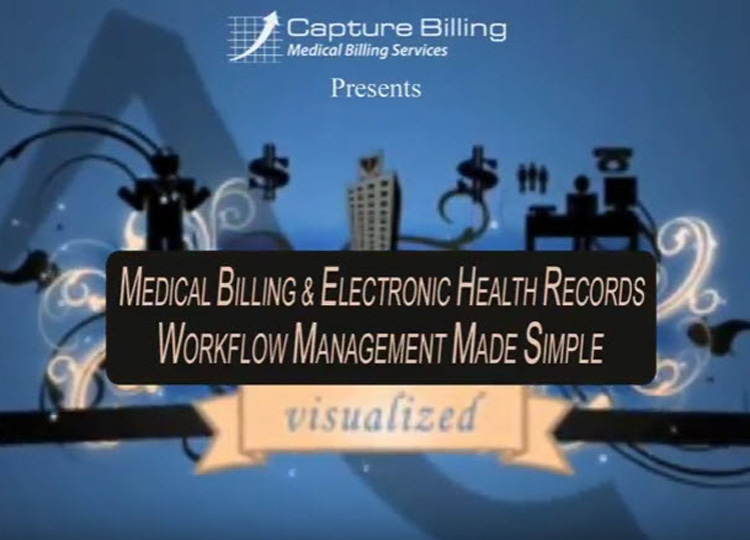Healthcare.
Ideally, here’s how a typical billing process would work at your average doctor’s office.
The doctor here provides a medical service to a patient, the doctor sends off the necessary paperwork to the insurance company.
In turn, the insurance company receives the paperwork and sends payment back to the doctor. The doctor has the money, the patient is feeling better, and everyone is happy.
A smooth, easy process, right?
Potentially, but without proper workflow, management things can go very bad, very quickly. Let’s take a closer look inside the workflow and see how this scenario often unfolds. We’re going to move fast here, so try to keep up.
The patient arrives at the doctor’s office and fills out an information form. The front desk, in between answering phones and dealing with patients, and filling out other paperwork eventually places the form in the patient’s chart.
When the patient is ready to be seen, the doctor pulls the chart, provides the medical service, and fills out a fee ticket, which he returns back to the front desk, who of course, is still answering phones, dealing with patients, and filling out other paperwork.
It’s now the front desk’s job to manually enter the fee ticket information into the computer, without errors hopefully, and then convert the fee ticket into a claim form to be sent to the insurance company via old-fashioned snail mail. Offices deal with many insurance companies, so hopefully it gets sent to the right one.
If not, it’ll be returned right back to the doctor’s office.
Now these claim forms can be quite complicated, so even when the claim form is sent to the correct insurance agency, occasionally it’ll be missing information or not properly coded.
Was that procedure actually covered? Did the doctor check the wrong box on the form?
If not, it gets sent right back to the doctor’s office again.
Now, assuming everything goes perfectly and the correct insurance company receives the correct claims form, the insurance company is now able to send a payment to the doctor in the form of a paper check. Of course, via old-fashioned snail mail.
With a little luck, though, the check arrives at the front desk where, as usual, they are still busy answering phones, dealing with patients, and filling out paperwork. If they’re not too busy at the time, they can post the check data into the computer and prepare the check for deposit.
Just as likely, however, the check will be placed in the no-time-to-deal-with-it-now file cabinet or, as large stacks of paper are prone to do, accidentally find its way into the nearby trash can. In the meantime, though, the doctor’s left wondering where his money is.
Did he fill out the fee ticket correctly?
Did the insurance company receive the claim form?
Are they disputing our claim? Is it lost in the mail?
Is there a keypunch error?
Was the check lost at the front desk?
All this results in an unhappy doctor, an unhappy patient, and a poorly run office, all relying on a business process in need of a serious workflow overhaul. A process that should’ve resembled this ended up looking more like this.
Though it may seem ridiculous, this scenario is actually quite common. In fact, it’s estimated that poor workflow results in doctors only receiving payment for around 60% of what they bill for.
Clearly, there’s major room for improvement here.
Now let’s take a quick look at a second doctor’s office. Let’s see how they operate.
In this doctor’s office, the patient fills out their information at a kiosk in the lobby, and the data’s sent directly to the doctor’s laptop.
As the doctor’s performing the medical service, he enters the billing information directly into his computer, where it’s sent electronically to the proper insurance company.
The insurance company instantly processes the information on the form, sends a confirmation email back to the doctor’s office, and makes payment instantly via an electronic funds transfer, directly into the doctor’s bank account.
Quite a difference, huh?
Which of these doctor’s offices operates more efficiently and more effectively?
Which one is more committed to workflow management?
The answer is clear.
Of course, workflow management does not just apply to the billing process in doctor’s offices. As all organizations grow, they face the challenge of managing, maintaining, and scaling their business processes.
In today’s economic environment, businesses need to be able to adjust quickly when it comes to optimizing operations. They must figure out new ways to raise productivity, lower costs, increase ROI, and more effectively meet the needs of the consumer.
To address these challenges, many organizations turn to healthcare workflow management.






